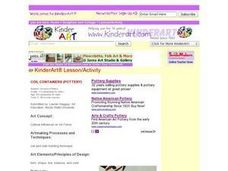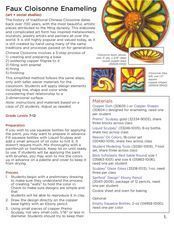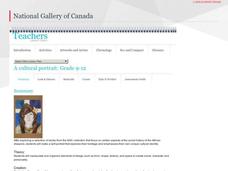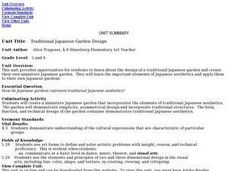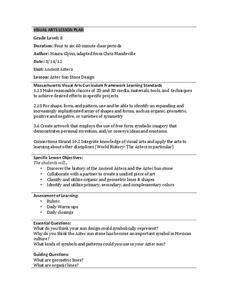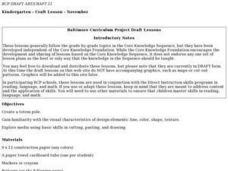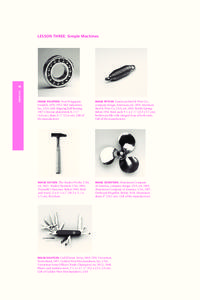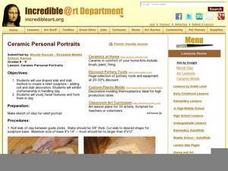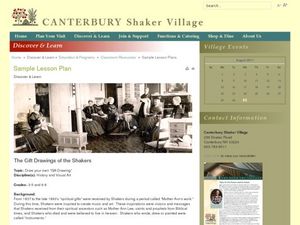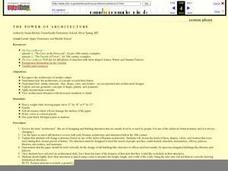National Gallery of Canada
Memories of the Past
Explore contemporary American Indian art. After viewing a set of images, class members discuss the design elements of techniques present, as well as how these artists represent history and culture. Learners examine the parfleche and...
Curated OER
Coil Pots
Children learn by doing. Here, they discuss cultural uses of containers, coil and slab techniques, functional aesthetics, and the principles of art and design. The entire process for making a coil pot is fully described here to make the...
Curated OER
Faux Cloisonne Enameling
Middle and high school students engage in enameling and apply design elements. They study the history and tradition of Cloisonne. The history of traditional Chinese Cloisonne dates back over 700 years, with the most beautiful, artistic...
Curated OER
Japanese Tea and Teacups
Upper graders use the potter's wheel to make Japanese style tea cups, which they will use in a Japanese style tea ceremony. They hone their sculpting techniques while exploring Japanese cultural and the history of tea. There are two...
Curated OER
How Media Shapes Perception
Students explain the impact that the media may have in shaping their intellectual and emotional responses to current events. They examine broadcast and Web-based news sites to find subtexts through the use of language, audio, and visual...
National Gallery of Canada
A Cultural Portrait
Explore heritage and identity through an examination of art and a related project. The featured art, related to the African diaspora, includes several types of art created by different artists. Pupils consider their own backgrounds and...
Curated OER
Traditional Japanese Garden Design
Pupils create a miniature Japanese garden that incorporates the elements of traditional Japanese aesthetics. They study the simplicity, asymmetrical design and incorporate traditional structures.
Curated OER
Social Studies: Adinkra Printing
First graders demonstrate a sense of artistic composition by creating shapes and symbols in the pattern of African Adinkra printing. They use glue to create a raised design and then print it on colored paper. Students use symbols from...
Curated OER
Ancient Aztecs
Is it a calendar? A religious symbol? A political statement? One thing for certain is that Aztec sun stone designs remain an important symbol in Mexican cultural art. Young artists craft their own Aztec Sun design incorporating ideas...
Curated OER
Totem Pole and Native American Costume
Students create a totem pole, Native American costume, and Native American mask. They discuss design elements, view a slideshow, and using various craft materials construct a totem pole with various face designs, a Native American...
Curated OER
Stories in Quilts
Have your class analyze the narrative art in quilts. They identify elements in this domestic art and the stories they tell. They define a story quilt, view an example, and analyze the work of Harriet Power. This is a great lesson to...
Curated OER
Visual Elements in the Giant Kites of Guatemala: Shape, Rhythm, and Color
Learners view pictures of and discuss geometric shapes included in kites from Guatemala. They discuss the repetition of shapes and how that creates a motif. Students draw three concentric arches across their paper. They create a design...
Curated OER
Simple Machines
Students design objects in the Museum of Modern Art's collection of simple machines. In this simple machines lesson, students explore the machine age in the MoMA's design collection. Students identify simple machines and the elements in...
Curated OER
Totem Mask
Sixth graders study totems of the Northwest Native Americans and design their own.
Curated OER
The Map Cartouche
Students discuss the history and purpose of cartouches. They examine examples of cartouches and design an original example with symbols of their choosing.
Curated OER
Paper Mola - Reverse appplique
Students investigate mola artwork from Panama. They discover the choices necessary to create a successful piece. Students understand the color and shape choices necessary for this art form.
Curated OER
Ceramic Relief Portrait
Eighth graders use draped slab and slab method to create a relief sculpture, adding coil and slab decoration. They study facial features and form them in clay. They study symbolism in Renaissance relief terra cottas.
Curated OER
The Gift Drawings of the Shakers
Learners create their own "gift drawings" that are inspired by the dreams and visions of the Shakers. In this gift drawings lesson plan, students learn the history of the Shakers, make their own drawing, and practice elements of design...
American Institute of Architects
Architecture: It's Elementary!—Fifth Grade
Young citizens construct an understanding of urban planning in this cross-curricular unit. Covering every aspect of city development from the political, economic, and social influences to sustainable building practices, this...
Curated OER
T H E P O W E R O F A R C H I T E C T U R E
Students arecognize the architecture of another culture, how the architecture of a people records their history, explore artistic elements, explore and use geometric concepts of shape, pattern, and symmetry.
Curated OER
Adire Eleko Cloth Glue Patterns
First graders are introduced to the art form of African Adire Eleko cloth - painted patterned textiles. They use paper, glue and paint to imitate the technique and create similar patterns on paper.
Curated OER
Kites of Japan
Students perform research into the designs of Japanese kites in order to appreciate them for their aerodynamic designs. The appreciation builds student interest in order to produce their own similar designs.
Curated OER
Planning a Healthy City
Ninth graders create a scaled model city. They create a blueprint that provides for the economic and cultural needs of a community. They identify where essential elements of the city should be located and explain the rationale for the...
Curated OER
A Flag for Mars
Students investigate the historical use of flags on Earth, debate ownership issues for interplanetary exploration, and design a flag for Mars. The implication of placing a flag at a location forms the focus of the lesson.

